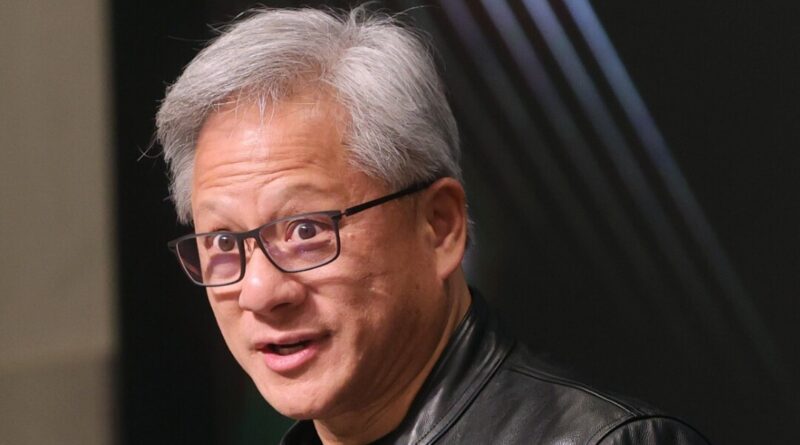US-China AI Race: Nvidia CEO Warns China Set to Dominate
Nvidia CEO Jensen Huang has issued a stark warning about the US-China AI race. Speaking at the Financial Times’ Future of AI Summit, he declared that China is poised to win the artificial intelligence competition. This statement underscores growing concerns over technological rivalry between the two superpowers.
Huang’s comments highlight the challenges facing US tech leaders like Nvidia. Despite the company’s dominance in AI chips, restrictions on exports to China limit its influence. He emphasized the need for American firms to engage with global developers, including China’s vast talent pool, to maintain leadership in the US-China AI race.
The executive’s remarks come amid heightened tensions. US policies aim to curb China’s access to advanced semiconductors, fearing military applications. Yet, Huang argues that excluding Nvidia from China could backfire, hurting innovation worldwide.
The Context of Huang’s Warning
Jensen Huang, Nvidia’s co-founder and CEO, knows the stakes intimately. Under his leadership, Nvidia has become the world’s most valuable company by market cap, largely due to AI demand. The US-China AI race has accelerated since the launch of tools like ChatGPT, putting semiconductors at the forefront.
Huang spoke on the sidelines of the summit in London. He told the Financial Times that China’s developer base is massive—half the world’s AI talent. Banning Nvidia chips there means losing influence over how AI evolves globally.
This isn’t Huang’s first call for nuance. In October, at Nvidia’s developer conference in Washington, he reiterated: ‘We want America to win this AI race.’ But he stressed building the world on American tech while including Chinese developers.
US Export Policies and Their Impact
US restrictions on AI chip exports to China began in 2022. The Biden administration, and now Trump, cite national security. Nvidia’s advanced Blackwell chips are off-limits, reserved for US customers, as Trump stated in a recent interview.
Huang noted Nvidia hasn’t even applied for licenses to sell these chips in China. Beijing’s stance has shut the company out, despite its desire to compete. This policy, Huang warns, cedes ground in the US-China AI race to domestic Chinese firms like Huawei.
Analysts agree the bans hurt US firms more long-term. Nvidia’s revenue from China dropped from 26% in 2022 to under 10% now. Meanwhile, China invests billions in its own chip industry, aiming for self-sufficiency.
Why China Could Win the US-China AI Race
China’s advantages are clear. It boasts the world’s largest population and a state-driven push for AI supremacy. The government funnels resources into research, with over 1,000 AI startups and universities churning out talent.
In contrast, US policies fragment the ecosystem. Huang points out that excluding Chinese developers means the global AI stack won’t run on Nvidia tech. China could build parallel systems, isolating American innovation.
Recent developments bolster China’s position. Huawei’s Ascend chips rival Nvidia’s in performance, despite sanctions. Chinese firms like Baidu and Alibaba deploy AI at scale, from autonomous vehicles to smart cities.
Huang’s warning signals urgency. If the US-China AI race tips toward Beijing, it could reshape industries from healthcare to defense. American tech giants risk losing market share as China forges ahead.
Expert Opinions on the Rivalry
Tech analysts echo Huang’s concerns. ‘The US is playing checkers while China plays chess,’ says one Silicon Valley expert. Policies meant to protect actually accelerate China’s independence.
Academic voices weigh in too. A Stanford study shows China’s AI patents now outpace the US. Officials like Commerce Secretary Gina Raimondo admit the bans have unintended consequences.
Stakeholders vary. US hawks prioritize security, while business leaders like Huang push for engagement. Consumers and investors watch nervously, as AI drives trillions in value.
Nvidia’s Strategy Amid Restrictions
Nvidia adapts creatively. It designs China-specific chips, like the H20, compliant with export rules but less powerful. These still power AI training in Beijing, keeping Nvidia relevant.
The company diversifies too. Deals with OpenAI and AWS, as in recent cloud pacts, bolster US dominance. Yet, Huang warns complacency could erode Nvidia’s edge in the US-China AI race.
Financially, Nvidia thrives. Q3 earnings beat expectations, with AI demand soaring. Stock dipped 1.75% post-warning, but long-term outlook remains bullish.
This follows Palantir’s earnings beat amid tech slumps, showing sector resilience. The US-China AI race influences investor sentiment globally.
Broader Industry Implications
The rivalry extends beyond chips. It affects cloud computing, data centers, and software. US firms like Microsoft and Google face similar hurdles, pushing alliances like the recent OpenAI-AWS deal.
For developers, fragmentation means dual ecosystems. Chinese AI might optimize for local needs, diverging from global standards. This could slow innovation and raise costs worldwide.
Stakeholders from startups to governments feel the pinch. In the US, job growth in AI slows without international collaboration. In China, state support fills the void, accelerating progress.
Historical Precedents in Tech Rivalries
The US-China AI race mirrors past battles. The 1980s semiconductor wars saw Japan challenge US dominance, leading to deals that balanced competition. Today, outright bans differ.
Cold War analogies apply too. Like the space race, AI is a proxy for power. But unlike missiles, AI permeates economy and society, amplifying stakes.
Recent history shows mixed results. Huawei’s 5G bans spurred Chinese alternatives, now exported globally. In AI, similar outcomes loom if the US-China divide deepens.
Comparison to Other Geopolitical Tech Conflicts
Compare to TikTok bans: US security fears clashed with free speech, fragmenting apps. In AI, the impact is vaster, as models train on global data.
Russia’s isolation post-Ukraine shows tech decoupling risks. Western firms lost markets; Russia built parallels. China, with more resources, could surpass in AI.
Experts predict a bifurcated world: US-led West vs. China-led bloc. Nvidia’s warning urges policy rethink to avoid this in the US-China AI race.
Future Implications and What to Watch
What happens next? Trump’s administration may tighten restrictions, as hinted in interviews. Yet, business lobbies push for targeted bans over blanket ones.
For Nvidia, innovation continues. Upcoming Blackwell shipments to US allies could counter China. But Huang’s plea for inclusion resonates amid election uncertainties.
Globally, the US-China AI race shapes alliances. Europe and India seek neutral ground, investing in sovereign AI. Watch summits like G7 for policy shifts.
Investors eye volatility. AI stocks like Nvidia fluctuate with geopolitics. Long-term, the winner takes the ecosystem, influencing trillions in GDP.
Practical Takeaways for Readers
For tech enthusiasts, diversify skills across ecosystems. Developers might learn bilingual coding for US and Chinese tools.
Investors: Balance AI exposure with geopolitics. Funds tracking semiconductors offer hedges against the US-China AI race.
Polymakers: Huang’s words signal need for smart strategy—secure advantages without self-sabotage.
Policy Comparisons and Global Perspectives
US policies contrast Europe’s collaborative approach. The EU invests in AI ethics, partnering with both powers. China reciprocates, gaining soft power.
In Asia, Japan and Korea align with US but seek Chinese markets. This multi-alignment could dilute the US-China AI race’s zero-sum nature.
International bodies like UN push standards. Yet, enforcement lags, leaving bilateral tensions dominant.
As in Trump’s tariff impacts on markets, policy ripples affect trade. AI’s intangibility amplifies effects.
Stakeholder Perspectives
Chinese firms celebrate independence. Huawei’s CEO calls bans a ‘wake-up call’ boosting innovation.
US developers worry about silos. ‘AI needs open data,’ says an OpenAI engineer, echoing Huang.
Consumers: Cheaper AI in China could lower global prices, but security risks rise with fragmentation.
Governments balance security and economy. Trump’s ‘America First’ clashes with Huang’s globalist view.
Background on Key Players
Nvidia: Founded 1993, pivoted to AI post-2010s. Huang’s vision drove GPU dominance.
China: ‘Made in China 2025’ plan targets AI leadership. Investments top $100B annually.
US: CHIPS Act allocates $52B for domestic production, countering China.
This builds on OpenAI’s AWS partnership, fortifying US AI infrastructure.
Broader Implications for the World
The US-China AI race influences ethics, jobs, and equality. Winning means setting norms—from bias mitigation to surveillance.
Economically, AI adds $15T to GDP by 2030. China winning could shift wealth east, challenging US hegemony.
Society: AI in healthcare or climate could benefit globally if collaborative. Division risks uneven progress.
For readers, understanding this race informs investments and careers. AI jobs boom, but geopolitics adds risk.
What Might Happen Next
Short-term: More export tweaks under Trump. Nvidia may launch compliant chips faster.
Medium-term: China achieves chip parity by 2027, per forecasts. US responds with alliances like AUKUS for tech.
Long-term: Possible détente if economic ties prevail. Or escalation, mirroring trade wars.
Watch Nvidia earnings and China AI conferences for signals.
Related Resources for Deeper Insight
For those exploring AI investments, stock market basics provide foundational knowledge amid volatility.
Understanding broader tech trends? Index fund investing for beginners offers diversified entry into AI sectors.
Ethical angles interest you? Dive into ESG investing 2025 to balance profit with global impact in the US-China AI race.
Source: Yahoo Finance




